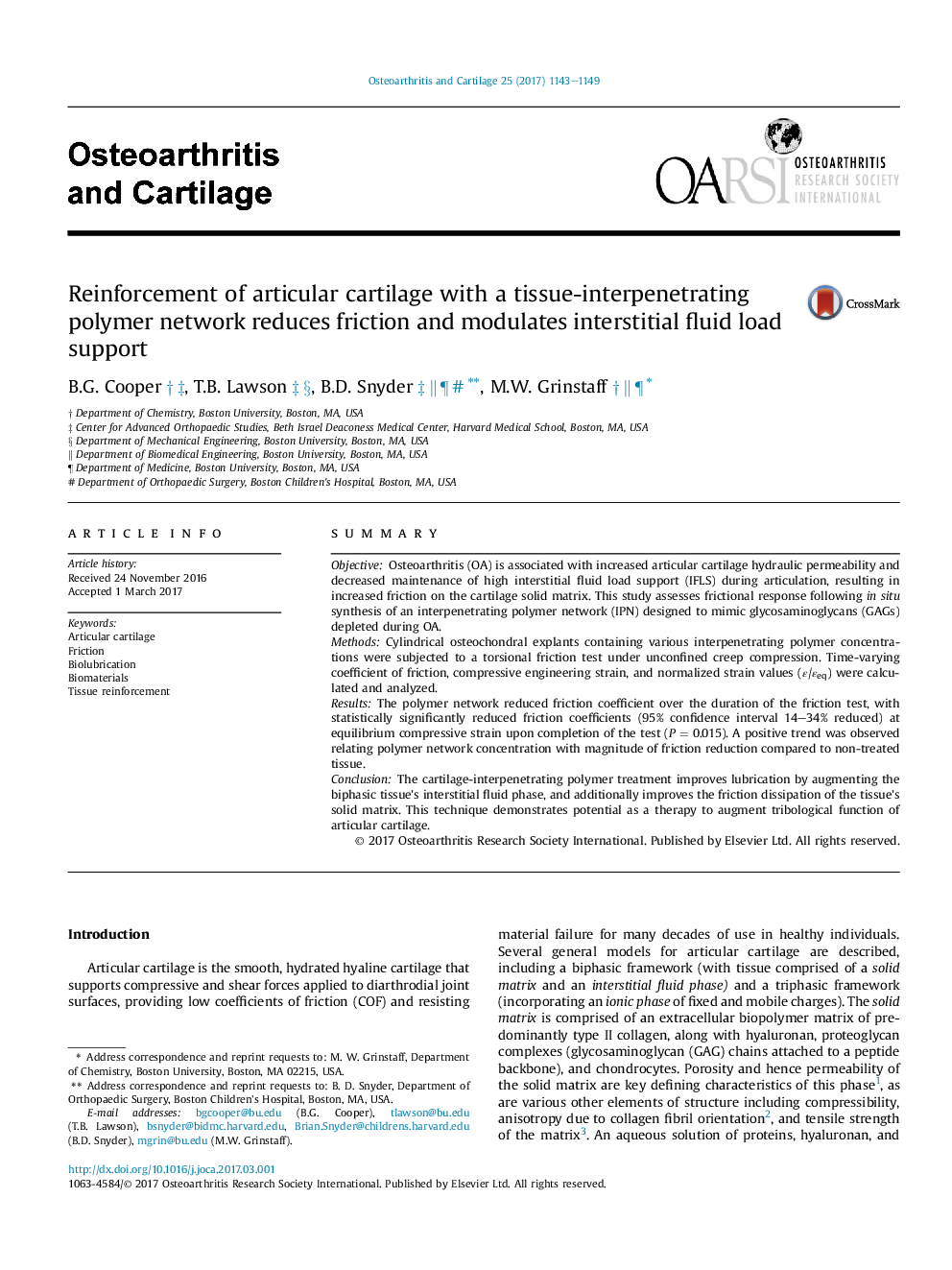| Article ID | Journal | Published Year | Pages | File Type |
|---|---|---|---|---|
| 5669316 | Osteoarthritis and Cartilage | 2017 | 7 Pages |
SummaryObjectiveOsteoarthritis (OA) is associated with increased articular cartilage hydraulic permeability and decreased maintenance of high interstitial fluid load support (IFLS) during articulation, resulting in increased friction on the cartilage solid matrix. This study assesses frictional response following in situ synthesis of an interpenetrating polymer network (IPN) designed to mimic glycosaminoglycans (GAGs) depleted during OA.MethodsCylindrical osteochondral explants containing various interpenetrating polymer concentrations were subjected to a torsional friction test under unconfined creep compression. Time-varying coefficient of friction, compressive engineering strain, and normalized strain values (ε/εeq) were calculated and analyzed.ResultsThe polymer network reduced friction coefficient over the duration of the friction test, with statistically significantly reduced friction coefficients (95% confidence interval 14-34% reduced) at equilibrium compressive strain upon completion of the test (P = 0.015). A positive trend was observed relating polymer network concentration with magnitude of friction reduction compared to non-treated tissue.ConclusionThe cartilage-interpenetrating polymer treatment improves lubrication by augmenting the biphasic tissue's interstitial fluid phase, and additionally improves the friction dissipation of the tissue's solid matrix. This technique demonstrates potential as a therapy to augment tribological function of articular cartilage.
